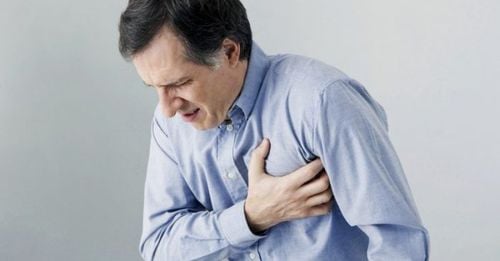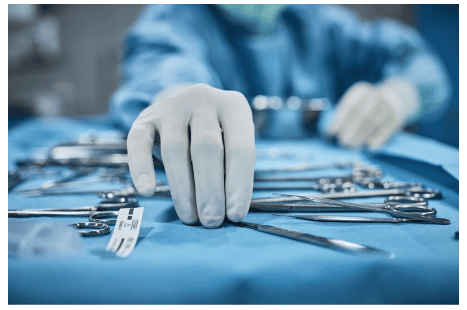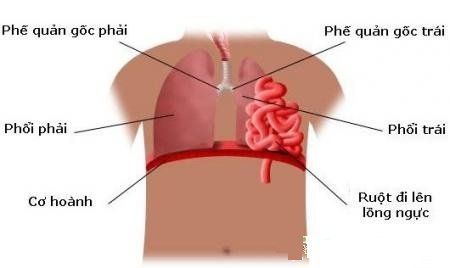This is an automatically translated article.
The heart has a very important role in the human body, so even the smallest heart injury can be life-threatening. So how dangerous are heart injuries and how do you distinguish them from other injuries?
1. What is a heart injury?
Chest trauma is a common injury in life, affecting many important organs including the heart. Although trauma to the heart is a fairly rare form of injury, its level of danger makes many people wary. These injuries can range from mild, such as pericardial hematoma, myocardial contusion, rupture of the heart chambers or structures in the heart, and the most severe is rupture of the heart stem.
Although up to 70% of deaths from multiple thoracic injuries occur with cardiac trauma, in practice cardiac trauma is rare in clinical practice.
Injuries to the heart are mainly caused by strong and sudden trauma to the sternum in accidents such as traffic accidents, work or in daily life.

70% ca tử vong do đa chấn thương vùng ngực có xuất hiện các chấn thương ở tim
2. How dangerous is a heart injury?
The heart has a very important role in the human body, responsible for bringing blood, nutrients and oxygen to the entire body. Any minor problem affecting the heart can be fatal.
For heart injuries, the risk of death is very high because the heart is surrounded by the rib cage, sternum and spine, it takes a very serious injury to cause damage to the heart.
So most of the heart injuries, if they are mild, are often difficult to recognize because there are not too many specific symptoms, and if they are severe, most of them die right after the injury. Only in a small number of cases, the patient suffered a small rupture in a chamber of the heart, causing acute cardiac tamponade, enough time to move the patient to the nearest medical facility or hospital for emergency.
3. Common types of heart injury
3.1 Broken Heart Trauma This is an injury to the heart that carries a high risk of death if not treated promptly. Patients with broken heart trauma have symptoms of fainting, then wake up, chest pain or shortness of breath is increasing gradually, when taking the patient to the hospital, the patient has signs of fatigue, irritation, chest pain. and severe shortness of breath. Clinical examination will show the following signs:
The patient's sternum area has signs of rubbing or bruising. The patient's face is more pale, veins are prominent, hepatosplenomegaly and hepatic venous return in the neck (+) )

Bệnh nhân chấn thương vỡ tim có biểu hiện đau tức ngực và khó thở dữ dội
Decreased arterial systolic blood pressure Central venous pressure increased Patients may present with some symptoms of blunt chest trauma such as pneumothorax. However, these manifestations are often few and disproportionate to the severity of the patient's chest pain and dyspnea. Auscultation of the heart is of little value and there are mainly abnormal murmurs due to perforation of the interventricular septum or rupture of the heart valve causing acute regurgitation. When conducting tests, scans will show abnormalities after trauma and broken heart in patients:
A straight chest x-ray shows a large heart shadow, loss of cardiac arcs, and a sharp heart border can also be seen. images of pneumothorax, hemothorax, rib fracture... Electrocardiogram shows ST elevation, low cardiac potential, arrhythmia. Echocardiography allows the physician to visualize fluid in the pericardial cavity, which is an important diagnostic aid and, in hemodynamic cases, allows the physician to further explore cardiac function and damage to the cardiac organs. heart valve. Cases diagnosed with broken heart must be quickly treated and operated on. For broken heart trauma, if diagnosed and treated promptly, the chance of saving the patient's life is up to 80% for a single-chamber rupture injury.

Các trường hợp được chẩn đoán vỡ tim phải nhanh chóng cấp cứu và tiến hành phẫu thuật
3.2 Myocardial contusion Cardiac contusion has many different degrees of damage and is difficult to recognize without surgery. If not detected early, the patient will experience cardiac arrhythmia. The most common injury is damage to the anterior wall of the right ventricle, just behind the sternum
Patients with myocardial contusion are mainly treated with medical therapy, rest and good ventilation to ensure the necessary oxygen, adequate compensation circulating volume. If there are signs of heart failure or arrhythmia, they will be treated immediately, using drugs to increase myocardial contractility when prescribed by a doctor.
3.3 Trauma to the heart valve The patient has clinical manifestations of acute heart failure due to open heart valve after blunt chest trauma. To accurately diagnose this condition, the doctor will order the patient to perform an echocardiogram.
Heart valve injuries are treated mainly with medical treatment and surgical treatment or valve replacement after one month of treatment.
Vinmec International General Hospital is one of the hospitals that not only ensures professional quality with a team of leading medical doctors, a system of modern equipment and technology. The hospital provides comprehensive, professional medical examination, consultation and treatment services, with a civilized, polite, safe and sterile medical examination and treatment space. Customers when choosing to perform tests here can be completely assured of the accuracy of test results.
Please dial HOTLINE for more information or register for an appointment HERE. Download MyVinmec app to make appointments faster and to manage your bookings easily.













